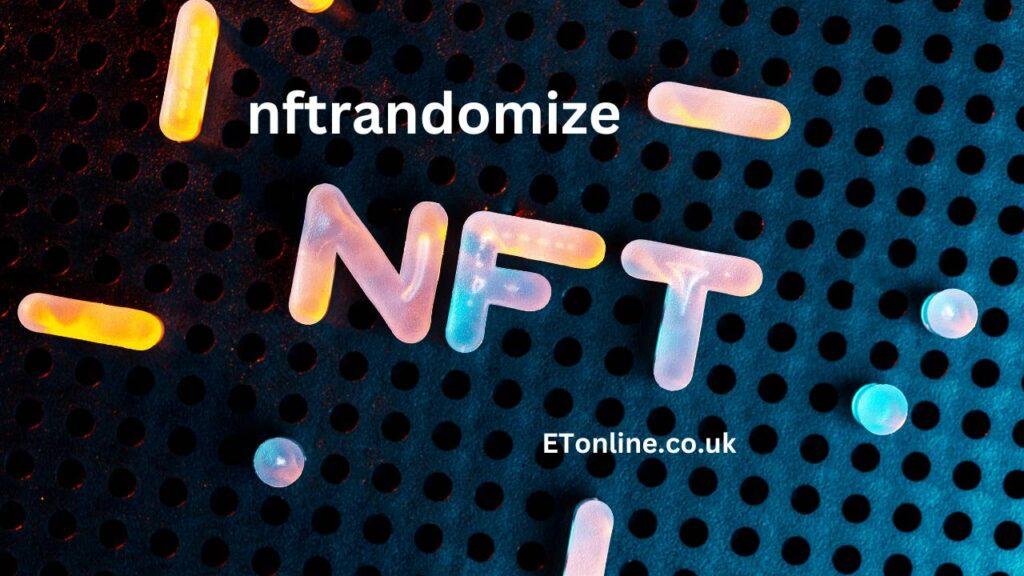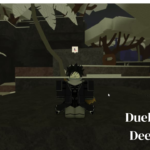NFTrandomize a cutting-edge plugin designed for Cinema4D, redefines creative possibilities by offering users the ability to generate randomized combinations within their digital scenes effortlessly. Whether you’re a seasoned artist looking to break creative boundaries or a newcomer eager to explore new design avenues, NFT Randomizer provides intuitive tools to inspire and innovate. By seamlessly integrating randomization into the design process, this plugin empowers artists to discover unique compositions, textures, and animations that breathe life into their projects. From dynamic visual explorations to streamlined workflow enhancements, NFT Randomizer stands as a pivotal tool in the toolkit of digital creators seeking to push the limits of artistic expression and produce captivating, one-of-a-kind creations.
What is NFTrandomize
The digital art world has been revolutionized by NFTs, and at the heart of creating unique and valuable tokens lies the NFTrandomize. But what exactly is an NFT randomizer? In essence, an NFT randomizer is a tool or algorithm that generates unique combinations of traits or characteristics to create one-of-a-kind digital assets. These traits can range from visual elements in digital art to attributes in virtual game items.
The importance of NFTrandomizers cannot be overstated. They play a critical role in ensuring the uniqueness and rarity of each token, which is paramount in determining its value. Without randomization, the market could be flooded with identical or similar tokens, diminishing their desirability and worth.
The concept of randomization in digital assets is not new. However, its application in NFTs has brought about a significant shift, offering artists and creators the ability to produce diverse and rare collections efficiently.
How NFTrandomize Work
Understanding the mechanics behind NFTrandomize is crucial for leveraging their full potential. At their core, these tools rely on sophisticated algorithms to generate random combinations of predefined traits. These traits are often layered to create depth and uniqueness in each token.
Several algorithms can be used for randomization, including simple random number generation, weighted randomization, and more complex cryptographic methods. The choice of algorithm often depends on the specific requirements of the project, such as the desired level of rarity or the type of asset being created.
Basic Principles of NFTrandomize
NFTrandomizer operate on a set of basic principles:
- Trait Pooling: Traits are predefined and stored in pools. These can include visual elements like colors and shapes, or metadata like names and attributes.
- Random Selection: Algorithms select traits from these pools randomly. The randomness can be influenced by factors such as weights or probabilities assigned to each trait.
- Layering: Traits are combined in layers, allowing for complex and unique compositions. This is especially common in digital art NFTs.
- Output Generation: The final output is a unique NFT with a distinct combination of traits, ensuring no two tokens are identical.
Examples of NFTrandomize in Action
To illustrate these principles, let’s consider a popular NFT project like CryptoPunks. Each Punk is generated with a unique combination of traits such as hairstyle, accessories, and facial features. The randomization process ensures that some traits are rarer than others, contributing to the overall value and desirability of each Punk.
Key Features of NFTrandomize
When choosing an NFT randomizer, several key features should be considered to ensure it meets your project’s needs. These features include customization options, automation capabilities, and integration with various platforms.
NFTrandomize Customization
Customization is crucial for creators who want to maintain a specific aesthetic or theme in their NFT collections. Advanced randomizers offer extensive customization options, allowing users to define trait pools, set probabilities, and establish rules for trait combinations. This level of control ensures that the final output aligns with the creator’s vision while still benefiting from the unpredictability of randomization.
NFTrandomize Automation
Automation is another significant feature of modern NFT randomizers. By automating the randomization and minting processes, creators can save time and effort, allowing them to focus on other aspects of their projects. Automated tools can handle large volumes of tokens, making them ideal for extensive collections.
Integration with Platforms
Integration capabilities are essential for seamless workflows. The best NFT randomizers offer easy integration with popular blockchain platforms and NFT marketplaces. This ensures that once the randomization process is complete, the tokens can be minted and listed for sale with minimal friction.
Popular NFT Randomizer Tools
Several tools have emerged as leaders in the NFT randomization space, each offering unique features and capabilities. Here, we’ll compare some of the most popular options to help you choose the right tool for your needs.
Overview of Top NFTrandomize Tools
- Art Blocks: Known for its generative art capabilities, Art Blocks allows artists to create unique pieces through algorithmic randomness. It’s particularly popular for projects that require intricate and varied designs.
- Rarity.tools: This tool specializes in analyzing and ranking NFTs based on their traits and rarity. It’s a valuable resource for collectors and creators who want to understand the market value of their tokens.
- NFT-Inator: A comprehensive tool for creating, managing, and randomizing NFT collections. It offers robust customization and automation features, making it suitable for large-scale projects.
Comparisons and User Reviews
When comparing these tools, it’s essential to consider factors such as ease of use, customization options, and integration capabilities. User reviews often highlight these aspects, providing valuable insights into the strengths and weaknesses of each tool.
Art Blocks is praised for its artistic flexibility and high-quality outputs but may require more technical expertise to use effectively. Rarity.tools is valued for its analytical capabilities, though it may not offer as much customization for creation. NFT-Inator strikes a balance with its user-friendly interface and extensive feature set, making it a popular choice for both beginners and experienced creators.
Techniques for Effective NFT Randomization
Creating a successful NFT collection involves more than just choosing the right tool; it also requires effective randomization techniques. Here are some strategies to consider.
Layering
Layering is a technique where traits are combined in multiple layers to create depth and complexity. For example, a digital art NFT might use separate layers for background, character, and accessories. This approach allows for a wide range of unique combinations while maintaining a cohesive aesthetic.
Metadata Assignment
Metadata assignment involves attaching specific attributes or information to each NFT. This can include details like the token’s name, description, and rarity level. Effective metadata assignment helps distinguish each token and adds value by providing collectors with detailed information about their purchase.
Algorithmic Diversity
Using diverse algorithms can enhance the randomization process. While simple random number generation might suffice for some projects, others may benefit from more complex methods such as weighted randomization or cryptographic algorithms. These advanced techniques can help achieve a desired level of rarity and uniqueness.
Case Studies of Successful NFTs
Looking at successful NFT projects can provide valuable insights into what works and why. Here are some notable examples and the lessons they offer.
Also Read: Duelist Attire Deepwoken Customize Your Look
Famous Projects
- CryptoPunks: One of the earliest and most iconic NFT projects, CryptoPunks uses a simple yet effective randomization process to generate unique characters with varying traits.
- Bored Ape Yacht Club: This project combines high-quality digital art with algorithmic randomization to create unique apes, each with distinct attributes and accessories.
- Axie Infinity: A blockchain-based game that uses NFTs for in-game assets. The randomization of traits ensures that each Axie has unique characteristics, influencing gameplay and value.
Lessons Learned and Best Practices
These projects highlight the importance of balancing randomness with intentional design. While randomization adds value through uniqueness, a well-thought-out trait pool and algorithm ensure that the final output remains visually appealing and coherent.
Choosing the Right NFT Randomizer Tool
Selecting the right tool for your project involves considering various factors such as customization options, ease of use, and integration capabilities.
Criteria for Selection
- Customization: Does the tool offer the flexibility to define trait pools and set probabilities?
- Ease of Use: Is the tool user-friendly, or does it require significant technical expertise?
- Integration: Can the tool integrate seamlessly with your chosen blockchain platform and marketplace?
Pros and Cons
Each tool has its strengths and weaknesses. For example, Art Blocks is ideal for artistic projects but may require more technical knowledge, while NFT-Inator offers a user-friendly interface but might lack advanced analytical features.
User Scenarios
Consider your specific needs and project goals. A large-scale project might benefit from a tool with robust automation features, while a smaller, more artistic endeavor might prioritize customization and quality of output.
Common Challenges and Solutions
Despite their advantages, NFT randomizers can present several challenges. Here are some common issues and how to address them.
Technical Issues
Technical problems can arise, such as glitches in the randomization algorithm or compatibility issues with blockchain platforms. Regular updates and a strong support team are essential for resolving these issues.
Security Concerns
Security is paramount in the NFT space. Ensure that your chosen tool uses secure algorithms and follows best practices to protect against hacks and fraud.
Scalability
As your project grows, scalability can become a challenge. Choose a tool that can handle increasing volumes of tokens and transactions without compromising performance.
Future Trends in NFT Randomization
The NFT space is continually evolving, and staying ahead of trends can give you a competitive edge. Here are some future directions to watch.
Innovations in Randomization
Expect to see advancements in randomization algorithms, including more sophisticated methods for ensuring uniqueness and rarity. These innovations will likely make it easier to create complex and valuable NFT collections.
Market Predictions
The NFT market shows no signs of slowing down. As more creators and collectors enter the space, the demand for efficient and effective randomization tools will continue to grow.
Technology Advancements
Technological advancements in blockchain and AI will further enhance the capabilities of NFT randomizers. These developments will likely lead to new features and improvements in existing tools.
Conclusion
NFT randomizers are powerful tools that play a crucial role in the creation and valuation of digital assets. By understanding how these tools work and leveraging the right techniques, creators can produce unique and valuable NFTs that stand out in the market. As the NFT space continues to grow and evolve, staying informed about the latest tools and trends will ensure that you remain at the forefront of this exciting industry.
Also Read: The Hidden Beauty of Maññorca: A Nature Lover’s Guide
FAQs
What is an NFT randomizer?
An NFT randomizer is a tool or algorithm used to generate unique combinations of traits for creating one-of-a-kind digital assets.
How do NFT randomizers ensure uniqueness?
They use algorithms to randomly select and combine predefined traits, ensuring that no two tokens are identical.
What are the key features to look for in an NFT randomizer tool?
Customization, automation, and integration capabilities are essential features to consider.
Can I use multiple randomization techniques in a single project?
Yes, combining different techniques such as layering and algorithmic diversity can enhance the uniqueness and value of your NFTs.
What are some popular NFT randomizer tools?
Art Blocks, Rarity.tools, and NFT-Inator are some of the top tools available.
What challenges might I face when using an NFT randomizer?
Common challenges include technical issues, security concerns, and scalability. Choosing the right tool and staying updated with best practices can help mitigate these issues.



